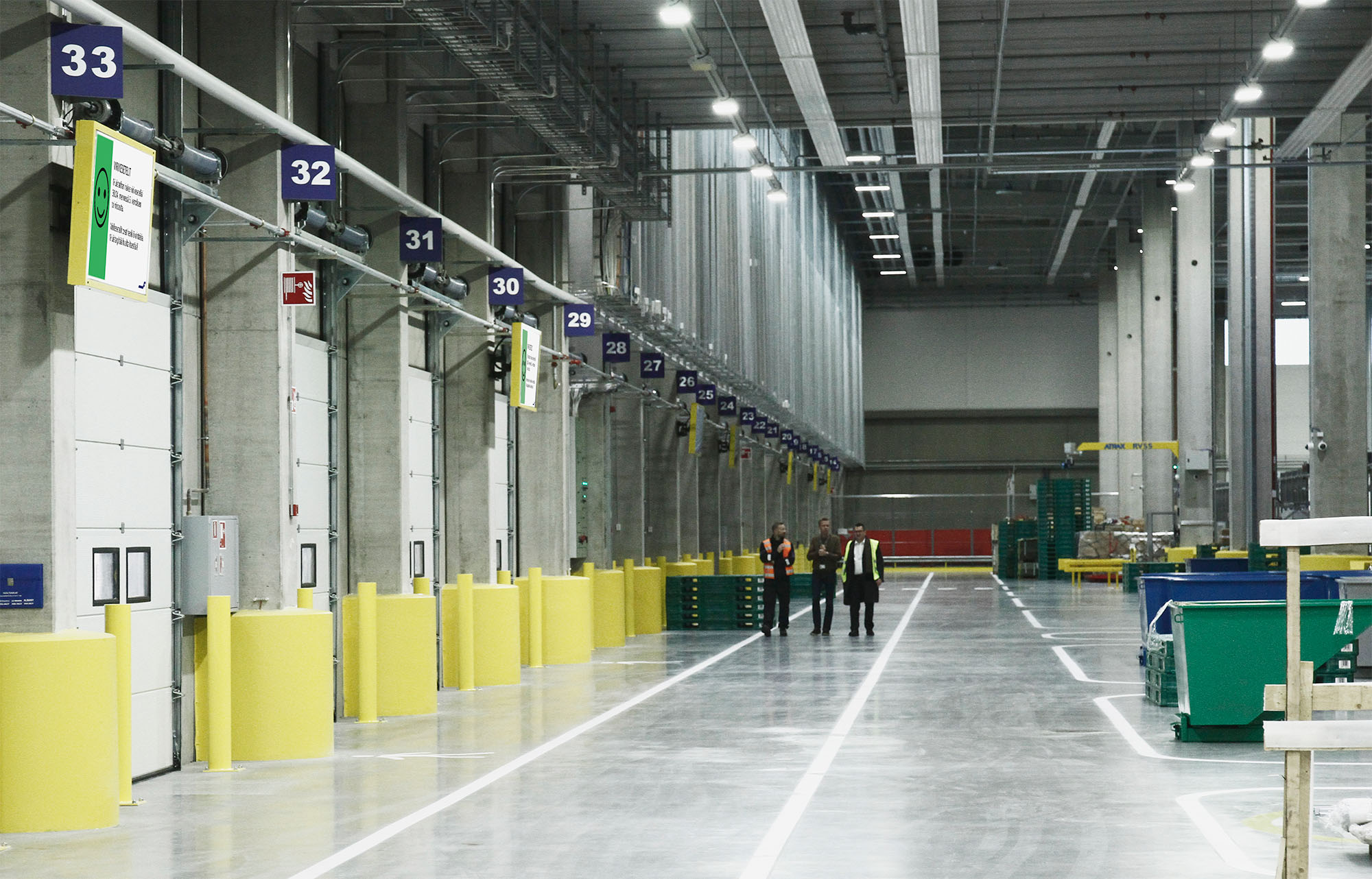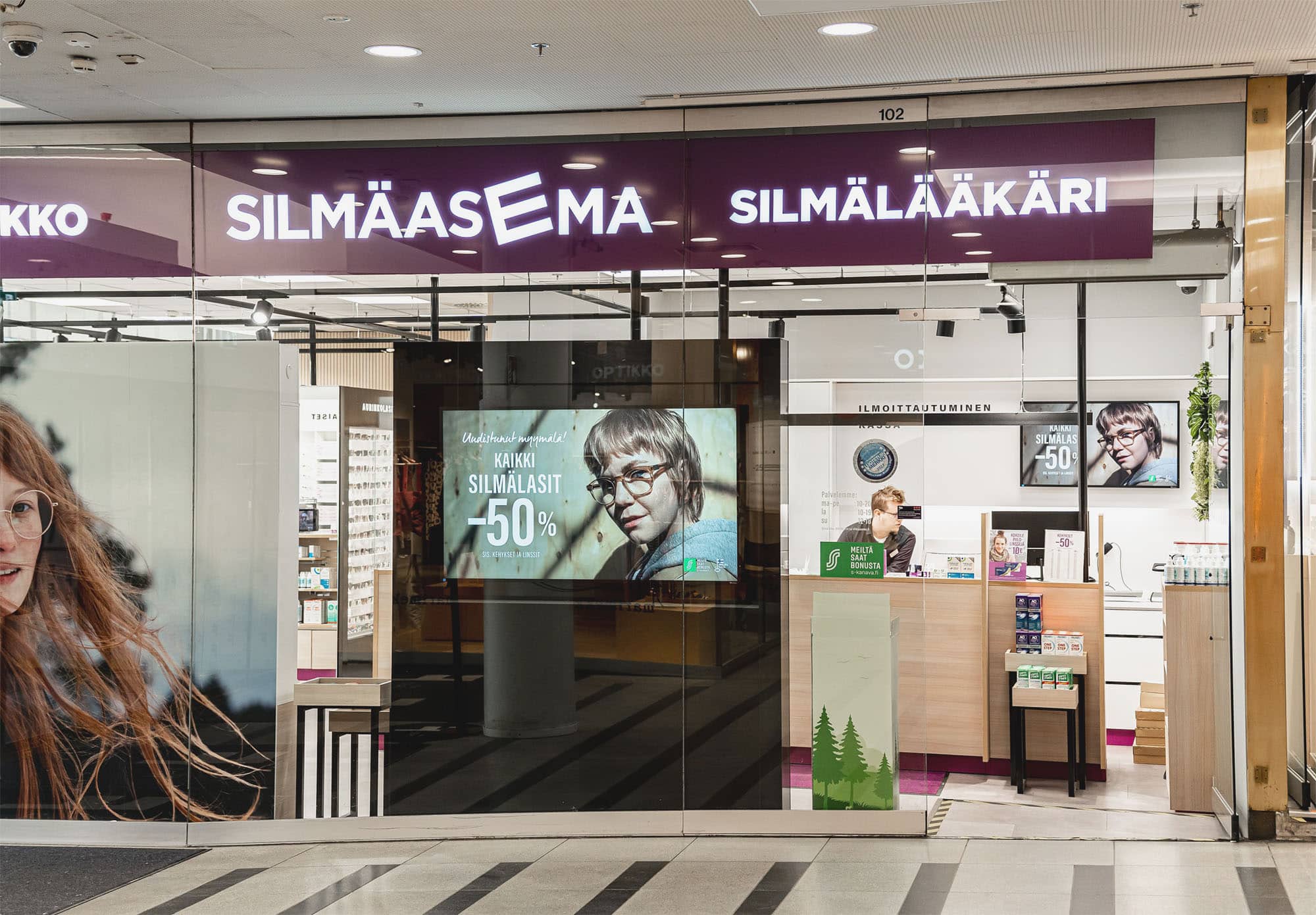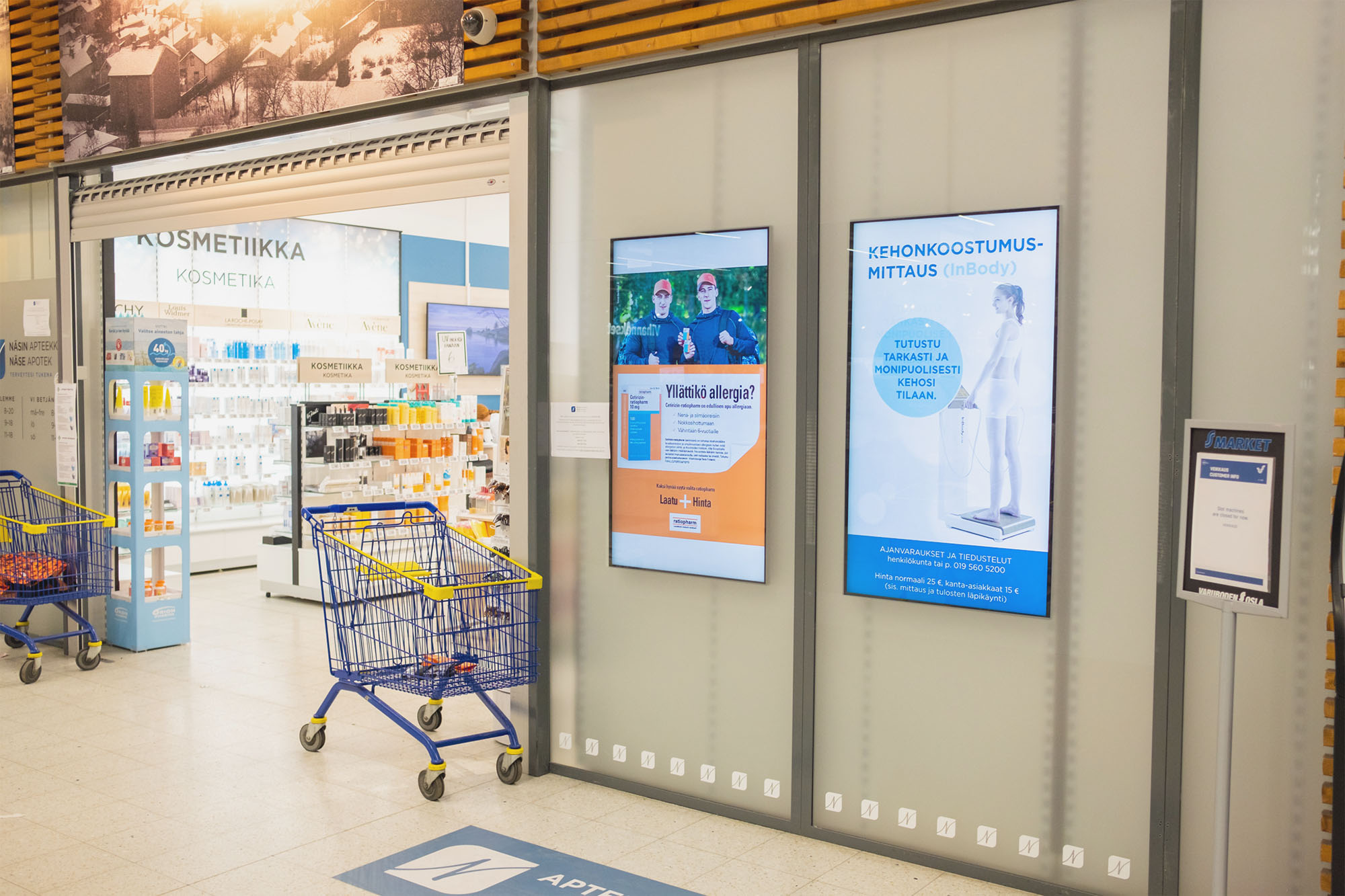Production work environments do not resemble the office world in terms of communication either. Digital signage in industry offers an effective way to keep employees up to date. In factories and production facilities, people do not sit at a machine in Teams meetings or browse the intranet news feed over a cup of coffee. Instead, work is done amidst machines, equipment and processes, wearing protective equipment, in conditions that require precision and concentration. This also places completely different demands on internal communication.
However, in these work environments, it is important and even necessary to communicate to teams and employees in real time. For communication to be truly accessible and impactful, it must come to the work – not the other way around. This is where digital communication, especially through digital signage, takes on an important role.
Communication is a security issue
Many people think of digital signage primarily as a mean of communication, but in reality they can be a critical part of safety management. When employees do not have access to the company intranet or other communication channels within the work community, critical information needs to reach all personnel equally through other means. Digital screens serve as an effective channel in this regard.
A safe work environment is built on proactive communication, not just preparedness for emergencies. Digital displays offer an effective way to bring safety communication into everyday work, right where work is done. They can be used to remind employees of safe working practices, instruct them on the correct use of machinery, and provide clear visual instructions on the use of protective equipment or specific requirements in work areas.
The screens can also highlight current occupational safety campaigns or, for example, weekly safety themes, such as “lifting work”, “slip prevention” or “hot work operation”. Occupational safety is also enhanced by the on-screen occupational safety counter, which shows in real time how many days have passed since the last occupational accident. This serves as a constant reminder of shared responsibility and helps maintain a safety culture. The counter can also be linked to other indicators, such as the number of observations or safety deviations.
Although everyday safety communication is the primary use, digital signage in manufacturing is also irreplaceable in alarm situations. If an accident or emergency occurs in a production facility, the displays can be programmed to respond to alarm situations automatically, so in the event of an emergency, important information can be transmitted directly to different parts of the premises in real time. The message can include instructions on exit routes, assembly points or procedures for different departments. When safety communication is a visible part of everyday life, the instructions do not just remain in orientation folders or on the notice board in the break room. Digital signage ensures that information circulates and remains in mind. This increases employee safety awareness and reduces risks at the level of the entire organization.
Production management and work efficiency through digital communication
The smooth flow of industrial work is largely based on the efficient flow of information between shifts and teams. The transfer of information during a shift change is often a critical moment. When the departing and arriving teams do not share a common workstation or communication connection, valuable information can easily be missed. With the help of digital signage displays, communication related to shift change can be established as a part of everyday life. When the display tells you at a glance where you are going, what has been done and what should be done next, there is no time spent on clarification or correcting errors. The information does not have to be complicated, the most important thing is clarity, timeliness and the fact that the information is easily available in the right place.
Production schedules, daily targets and other essential information can also be presented visually in a way that is easy to understand, even behind protective glasses or in challenging lighting. When communication is designed correctly, the employee does not have to stop or think, but gets the information they need quickly and effortlessly.
Communication is not just for emergencies – it is the foundation for smooth everyday operations. Utilize digital signage displays in industry for example:
- For shift status reports
- To show the day’s tasks, priorities and responsible persons
- For visualizing schedules
Intelligent communication is based on automation and integrations
Modern digital communication is no longer based on someone manually updating the screen. That’s why the technology behind digital displays, such as FirstView’s MediaCloud, is designed to automate content directly from other company systems. For example, Power BI integration allows production figures, efficiency indicators and other important KPIs to be updated directly on digital screens without separate manual work. At the same time, information on inventory situations, material flows or, for example, maintenance needs can be displayed, which facilitates both work planning and operational management.
Most employees want to know how the company is doing and how their work affects the big picture – this also applies to production workers. When information flows from the system directly to the employee’s eyes, transparency and timeliness are created. At the same time, employees stay better informed about the overall picture – and their own role as part of the production chain becomes concrete.
Read more: Choosing an digital signage system for internal communication »
Communication strengthens team spirit and commitment
However, communication does not only affect processes, but above all people. Well-managed internal communication has a significant impact on how employees experience their work and their place in the work community. Especially in industrial tasks, where work is often done alone or with hearing protection, an information display can be a surprisingly important connection builder. Effective and open sharing of information among teams helps personnel to commit more effectively to their work tasks, their team’s goals, and the entire work community.
Information flow is not just about managing production – it is also about managing people. Well-planned communication can:
- Increase the meaning of work
- Improves trust between teams
- Support well-being and recovery at work
When the digital signage screens show a thank you for a job well done, information about an upcoming day off or even congratulations to a birthday hero, the feeling is built that one’s work is noticed and that the employer cares. Such small gestures can significantly increase work engagement, strengthen a sense of belonging and increase motivation. At the same time, important well-being themes can also be communicated; encouraging healthy eating, reminding about exercise during breaks or giving tips about new occupational health services, for example. When messages are repeated visibly and in a positive spirit in everyday life, they begin to become part of the workplace culture.
Also read the blog: Five tips for developing corporate culture and employee experience »
Knowledge doesn’t just flow – it stays in the memory
One of the biggest advantages of digital signage is repeatability. Many instructions and practices, especially those related to new work tools, safety practices or quality standards, need to be repeated before they are remembered. Digital displays can help build a continuous flow of communication that doesn’t get lost in the depths of the inbox or forgotten on paper on the break room wall.
Videos, short instructions and visual reminders can significantly improve the absorption of new information and help maintain the required quality level. Even manuals for rarely used machines can be kept visible where they are needed – exactly when the need arises.
Communication is the silent competitive advantage of production
Although digital signage itself does not produce any products, it can have a significant impact on how efficiently and safely work is done. Effective communication reduces errors, speeds up transitions, improves safety and increases employee engagement. All of these are directly reflected in customer satisfaction, work quality and ultimately the profitability of the entire business.
When communication works:
- Safety is improving
- Work is done more efficiently
- Employees are happier and more motivated
- Work quality and customer satisfaction increase
Communication should not be seen as just a support function – but as a strategic element that helps build a better, safer and more enjoyable workplace. Information displays in industry are a concrete way to make this visible every day.
ead also the blog: Digital signage improves internal communication »
Where should I start?
If you are wondering how to make digital signage part of your production routine, it’s worth starting simply:
- Identify key locations (e.g. break rooms, hall entrances, proximity to production lines)
- Plan content from the employee’s perspective – what information is really needed?
- Take advantage of integrations: bring in goals, production data, and safety messages
- Make communication continuous – not campaigns, but everyday support
👉 Need help? FirstView is happy to help you design a digital signage solution that is right for your production environment. Contact us and let’s talk more about how digital communication can improve your everyday life.




